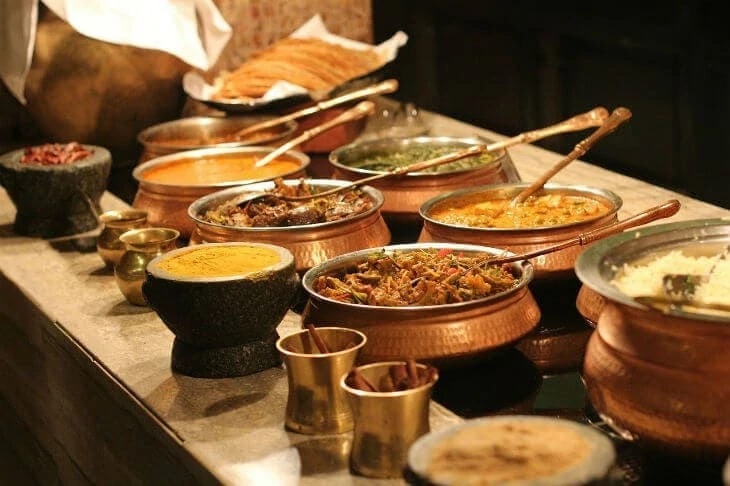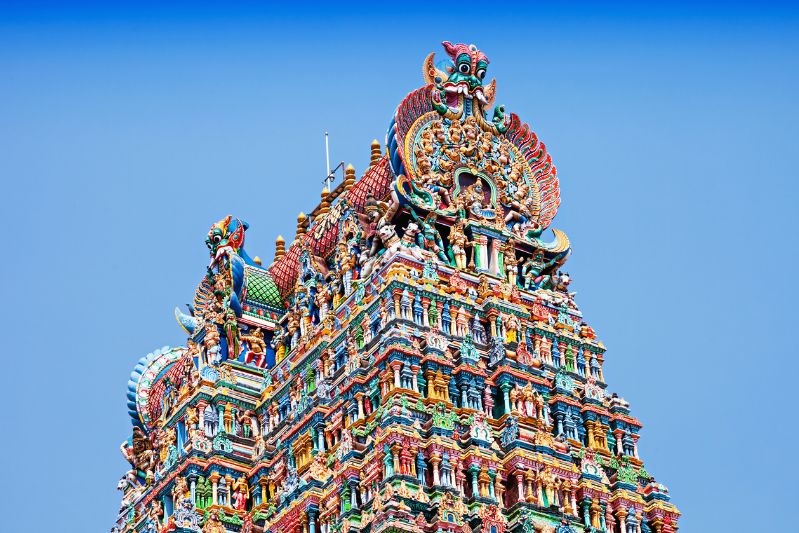Flora in India by Best Wildlife Packages
Through Best Wildlife Packages we learn in India’s flora is one of the richest in the world. So far, around 16,000 species of flowering plants and around 30,000 spore plants have been identified. This accounts for 6-7% of the plant species in the world. Depending on the vegetation zone, we differentiate between thorn bush zone, dry deciduous forest, moist deciduous forest, rainforest and mangrove forest. Typical tree species are teak, sal, Almend, figs (banyan tree = strangler fig), mango, palm trees, bamboo, sandalwood and rosewood. The widespread Nim tree has great medicinal importance and is used, among other things, as an insecticide.
In the dry areas on the Pakistani border (Thar Desert) there is a sparse flora, which consists mainly of steppe grasses. Thorny bushes and species of the genera Capparis (caper bush) and Zizyphus (jujube) are also common. Bamboo is found in some areas; Palm trees are one of the few native tree species in this region. The wetter Ganges plain, on the other hand, is the habitat of numerous plant species. The vegetation is particularly lush in the southeastern plains: mangroves and sal trees can be found here. A diverse range of high mountain flora thrives in the higher Himalayan regions.
The lower slopes, on the other hand, are densely forested and allow the growth of numerous subtropical plants, especially many species of orchids. In the northwestern Himalayas of India,best Wildlife Packages, conifers such as cedars and spruces dominate. In the eastern Himalayas, on the other hand, there is lush tropical and subtropical vegetation, including: Rhododendrons. The most common tree species here include oaks and magnolias.
The rainy Malabar Coast in the southwest of the Indian peninsula and the slopes of the Western Ghats are densely forested. Evergreen plants, bamboo and valuable species of precious wood such as teak trees thrive in this region. There are extensive areas of jungle in the swampy lowlands and along the lower slopes of the Western Ghats. Although the vegetation in the Deccan highlands is less lush, there are stands of bamboo and palm trees as well as deciduous forests throughout the peninsula.
Fauna in India by best Wildlife Packages
The forests, plains, hills and mountains of India are home to a diverse range of wildlife. This applies, for example, to large cats such as tigers, leopards, clouded leopards and (in the Deccan highlands) cheetahs. Lions also occur, but today they can only be found in the Gir National Park in Gujarat. Ambitious national and international efforts have succeeded in saving the endangered tiger.
Today its numbers have grown again to a population of several thousand animals, which are protected in reserves such as Ranthambore in Rajasthan. In recent years, however, the Tigers have once again found themselves in increasing trouble. Indian elephants are found on the northeastern slopes of the Himalayas and in the remote forests of the Deccan highlands. Rhinos, sloth bears, wolves, jackals, Asian wild dogs, gaurs, buffaloes, wild boars, deer, antelopes and various species of monkeys are also native to India.
In best Wildlife Packages addition, wild goat and wild sheep species as well as ibex and seraue (related to chamois) can be found in the Himalayas and other mountain regions. Other mammal species worth mentioning are dwarf wild boar and bandicoot rats. India is home to numerous species of snakes; these include cobras, chain vipers and saltwater snakes.
Among the non-poisonous species, the pythons are particularly useful because they destroy harmful rodents; The Indian reptile fauna also includes crocodiles. Striking bird species include parrots, peacocks, kingfishers and herons. Rich fishing grounds with numerous edible species can be found in the rivers and coastal waters.
Recommended Itinerary by best Wildlife Packages
Characteristics best Wildlife Packages: On this nature trip you will experience the diverse wildlife of India. Open off-road vehicles specially designed for safaris take you through the hilly jungle, over grassy meadows and along swamps in search of the striped big cat and other animals of India. With Tadoba, Kanha, Pench and Bandhavgarh you will experience four animal-rich national parks in Central India – an exciting nature trip to the kingdom of the tiger awaits you!
Tiger Population: India is home to 75 percent of the world’s tigers. Despite numerous national parks and tiger reserves, the beautiful big cats are still critically endangered. The reasons include poaching, the belief in the tiger’s healing powers in traditional Chinese medicine and the dwindling habitat. So-called tiger tourism and the associated financial income, which also benefits the population, are intended to show that it is worth protecting these magnificent animals.
Tour guide: During this best Wildlife Packages you will be accompanied by a very experienced English-speaking wildlife guide for the entire time – from arrival in Nagpur to departure in Jabalpur. As a nature lover, he is also an excellent nature photographer who is very familiar with the animals of his homeland, their lifestyle and behavior. He will be happy to share his passion for wildlife observation with you and, if you wish, will be happy to provide advice with practical tips and tricks.
Day 1: Arrival New Delhi
Upon arrival at New Delhi International airport, meet & greet by our staff and drive to hotel for overnight stay.
Day 2: Delhi – Nagpur (Flight) and drive to Tadoba
Morning board flight to Nagpur. On arrive in Nagpur in the morning and be welcomed by your tour guide. It is now time for your first Indian breakfast, which you will enjoy in what is probably the most beautiful restaurant in Nagpur. The stylish hotel, which impresses with its new-oriental interior design, is also a nice start to your trip to India. This is followed by the approximately four-hour drive to Tadoba. After lunch, your first safari in Todoba is on the agenda today. Overnight stay at Irai Safari Lodge (B/L/D)
Day 3 and 4: Game drives in Tadoba National Park
On these days there will be two safaris in Tadoba National Park every day. The protected area is a real experience right at the start of your trip to India. Extensive teak and bamboo forests, moors and lakes, but also extensive hills and valleys with rocky ground determine the rough landscape. In addition to the numerous tigers, the protected area is particularly known for sloth bears, leopards and wild dogs. It is also home to more than 280 species of birds, including birds of prey such as gray-headed sea eagles and harriers, as well as some rare Indian owl species. Overnight stays at Irai Safari Lodge (B/L/D)
Day 5: Continue to Pench National Park
Today you continue to Pench National Park, about five hours away, where the first game drive will take place in the afternoon. Overnight Tuli Tiger Corridor (B/L/D)
Day 6: Wildlife viewing in Pench National Park
Today you will once again explore the large protected area of Pench, the setting of Rudyard Kipling’s Jungle Book, and follow in the footsteps of Mowgli, Bagheera, Baloo and Shir Khan. The Pench River flows through the protected area and also gives it its name. The landscape is still dominated by rolling hills and distinctive teak forests. Currently, around 15 tigers, 30 leopards and 39 other species of animals live here, including axis and sambar deer, jackals, wild dogs and gaur.
200 different species of birds are also at home here. The national park is also known because of several BBC documentaries, including the well-known “Spy in the Jungle”, which documents the growing up of four tiger cubs in the protected area. Accompanied by an experienced nature guide from the National Park Authority, you will go on two game drives on this day. Overnight Tuli Tiger Corridor (B/L/D)
Day 7: Drive from Pench to Kanha
In the morning we continue our journey to Kanha National Park, almost 200 kilometers away. Nearby we take an interesting tour through a small village that impresses with its cleanly swept streets and bright whitewashed houses. And when you take a personal look behind the thick clay walls, you can feel how important the ownership of cows is for the Indian rural population to this day, because they represent wealth and a high social status. In the afternoon we go on the first game drive in Kanha. Overnight stay at Tuli Tiger Resort (B/L/D)
Day 8 and 9: Safaris in Kanha National Park
On these days you will go on a total of four extensive safaris in Kanha National Park and listen to the alarm signals of deer and langurs that loudly announce the arrival of a tiger. Once the nature guide has picked up a scent, follow the big cat until, with a bit of luck, you can spot it and take beautiful photos.
The Barasingha deer, which can often be found on the banks of small lakes together with various water birds, and the Gaur, the world’s largest cattle, are also photographically interesting. Fans of landscape photography will also get their money’s worth in Kanha’s charming surroundings. The sal and bamboo forests, hills and rivers served as inspiration for Rudyard Kipling for his “Jungle Book”. Overnight stay at Tuli Tiger Resort (B/L/D)
Day 10: Drive from Kanha to Bandhavgarh
Today you drive from Kanha to Bandhavgarh and get an impression of the remoteness of the agricultural state of Madhya Pradesh. The days when Bandhavgarh was the private hunting ground of the Maharaja of Rewa are long gone. Fortunately, the core area of Bandhavgarh was declared a national park in 1968 and its area has quadrupled since then. The first safari in Bandhavgarh is scheduled for this afternoon. Overnight Bandhav Vilas (B/L/D)
Day 11: Bandhavgarh National Park
The Bandhavgarh sanctuary was once considered the land of the white tiger. Unfortunately, the last of his kind was captured in 1951. The vegetation ranges from tropical deciduous forests, dense bamboo growth, dry land, mixed forests, the Vindhya hills to swamp-like grasslands.
In the morning you will undertake the last game drive of your trip in this varied landscape. Because all national parks in the state of Madhya Pradesh are closed in the afternoon on this day of the week, today offers the opportunity for a guided walk. The main thing is to discover smaller animals such as butterflies, dragonflies and reptiles. Overnight stay in Bandhav Vilas (B/L/D)
Day 12: Flight back to Delhi
Before you leave today there is still some time to relax by the pool or to enjoy the atmosphere of the lodge with a delicious chai in the garden. Then drive to Jabalpur airport for your flight back to Delhi. After arrival there, transfer to the hotel. Overnight at Delhi (F)
Day 13: Departure and end of trip
Transfer to Delhi Airport for your return flight your home.
Best Wildlife Packages by Delighted Journey




